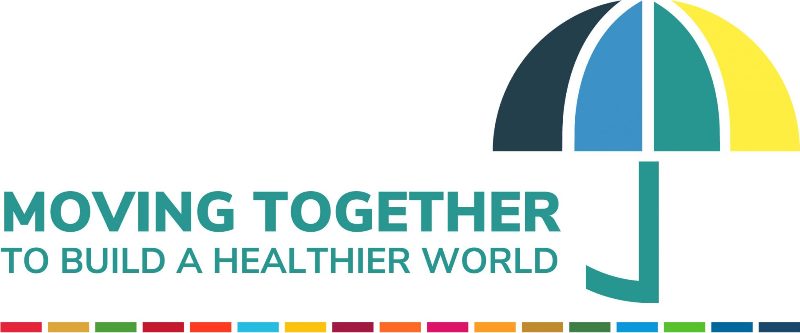Noncommunicable diseases (NCDs) are diseases of long duration, not spread through other people or infections. In Kenya, NCDs account for about 40% of annual deaths and over 50% of hospital admissions.
UHC in Kenya
Universal Health Coverage refers to the accessibility of a full range of quality and essential healthcare services (including health promotion, prevention, treatment, and rehabilitation) by all people, where and when they need them, without incurring financial obstacles.[1]
Kenya kickstarted activities and initiatives in the implementation and progression towards the realization of UHC through the Kenya Health Coverage Policy (2020-2030). The policy is also geared to the country’s commitments and steps to the attainment of Sustainable development goals (SDG 3) on good health and wellbeing. In the policy, the country’s plan to progressive UHC includes:
- The Constitution – Emphasizes health as a basic human right. The constitution states the rights of the population towards access to the highest attainable standard of health, emergency medical treatment, and social security to individuals unable to support themselves, among others.
- Kenya Health Policy (2014-2030) – It emphasizes healthcare financing as one of the significant policies in the UHC direction, which comprises steps in sourcing and proper management of finances essential in healthcare services provision. The policy is to ensure social protection from financial risk through adequate sourcing, allocation, and utilization of health service provision[2].
Some of the strategies for achieving this include public-private partnership (PPPs), National Health Insurance Fund (NHIF) in the fulfilment of one of the big four agendas, affordable medication. There have been attempts to meet universal health coverage through the expansion of the National Hospital Insurance Fund (NHIF) benefits package, such as the inclusion of the maternity benefits package) and interventions to increase subscriptions to NHIF among the population to ramp up resourcing for the fund.
Recently, the government took a step to introduce new health bills intended to crystalize and drive progress towards UHC namely:
- The Facilities Improvement Financing Bill – Sets to provide for the improvement, financing, and management of public health facilities at the county and sub-county level. It also provides for the administration of the improvement in health financing.
- The Digital Health Bill – Sets to provide and promote digital health services, including m-health, health e-learning, and telemedicine, establish a comprehensive integrated digital health information system (the Digital Superhighway) which will require a transition from the ICD 10 to ICD 11 system, and data governance and protection.
- The Social Health Insurance Bill – set to replace the NHIF Act. It also includes the Emergency, Chronic, and Critical Illness Fund, encompassing critical and chronic illnesses like NCDs and emergency services.
- The Primary Health Care Bill – Provides a framework for access to, delivery of, and management of primary health care through establishment of primary, community, and facility health services, primary health care workforce, and community health promoters.
These bills still in the consultative phase with the public as prescribed for in the constitution, are critical and need structured visionary engagement to ensure the ultimate outputs are critical. It’s our call that we all engage to infuse our contributions in these bills.
Challenges in the attainment of UHC and Gaps in NCD care
- Inadequate health financing
- There is neglect in the rationalization of financing towards infrastructure, equipment, and health workforce in informal and rural settlements. A study conducted in over 250 healthcare facilities (Level 2 and above) in the country found that about 93% of the facilities offer screening/diagnosis and management services for chronic respiratory diseases, 85% for diabetes, 65% for cardiovascular diseases, and only 24% of the facilities offered cancer screening services.[3] Cancer screening services were only offered in Level 4 and above facilities. Moreover, the study revealed that facilities in urban areas had better readiness to offer NCD care compared to those in rural areas. Inadequate infrastructure and equipment are major hindrances to screening/diagnostic and general inpatient services for NCD-affected individuals.
- There is a major bottleneck in the availability of quality-assured NCD medications. In the same study, these facilities had a 53% availability of diabetes medications, 64% of CVD medications, and 34% of CRD medications, with most having no cancer medications except for the level 6 facilities. There is an issue with medication stock-outs in public sectors because the Kenya Medical Supplies Authority (KEMSA) can only meet 70% of the county orders. In general, the availability of NCD medications is about 50% in public and non-profit facilities and about 62% in private facilities.[4]
- There is also a challenge in the affordability of medications. Purchasing medications in the public sector would set back one’s income by about 2%, while that in the private sector by about 10%. This creates a major issue since most people are forced to purchase medicines in the private sector due to the stock out of medications in the public sector.
- Quality and quantity of service delivery personnel and facilities
- About 63% of Kenyans can access government health services within an hour from their residences. There is an unequal distribution of health services across the 47 counties. Some have to walk long distances to access health facilities and still not find the right services for screening or management or wait in long queues to be tended to due to understaffing of healthcare personnel.
- Other factors that hinder the success of UHC and are also a gap in NCD care include the quantity and quality of personnel for healthcare delivery. Understaffing and inadequately trained staff significantly impact the quality of NCD healthcare delivery. The study also demonstrated a gap in trained personnel delivering NCD care, with 57% of the staff trained for diabetes care, 46% for CVD care, 52% for CRD, and 77% for cancer2.
- Inadequate health promotion and prevention strategies
- There is little awareness among communities on the causes, risk factors, and preventive measures one can take against NCDs. In turn, there are poor management outcomes for NCDs, resulting in high rates of premature deaths.
- Health insurance challenges
- The primary challenge lies in the planning and development of a healthcare system funded by citizens through tax, which can be channeled into subsidizing healthcare costs for special populations like children, the elderly, and mothers. There lies another challenge in developing a fitting balance between tax options and health insurance.
Conclusion
In conclusion, noncommunicable diseases are the biggest cause of death in the country. While the government has taken strides towards the progression of UHC, there are still notable disparities in the NCD-specific readiness within counties and sub-counties. Major gaps exist in NCD care that need to be addressed. Access to quality and affordable NCD care is a major hindrance due to stock-out of NCD medications in the public sector. Most patients resort to privately owned pharmacies to buy medications, spending a considerable proportion of their incomes to get healthcare services. The issue of shortage of trained personnel persists to date, yet a large number of recent medical graduates stay unemployed. Research to raise awareness on NCDs is needed to increase health promotion and prevention initiatives, which are crucial in reducing new NCD diagnoses and mortality.
References:
[1] Universal Health Coverage (UHC): https://www.who.int/news-room/fact-sheets/detail/universal-health-coverage-(uhc)
[2] Kenya Health Policy 2014 – 2030: http://publications.universalhealth2030.org/uploads/kenya_health_policy_2014_to_2030.pdf
[3] Readiness of health facilities to deliver non-communicable diseases services in Kenya: a national cross-sectional survey: https://bmchealthservres.biomedcentral.com/articles/10.1186/s12913-022-08364-w
[4] Household access to non-communicable disease medicines during universal health care roll-out in Kenya: A time series analysis: https://www.ncbi.nlm.nih.gov/pmc/articles/PMC9020677/
Article authored by Dr. Lucy Machocho, Pharmacist & Member Ryculture YouTH Voices Network

